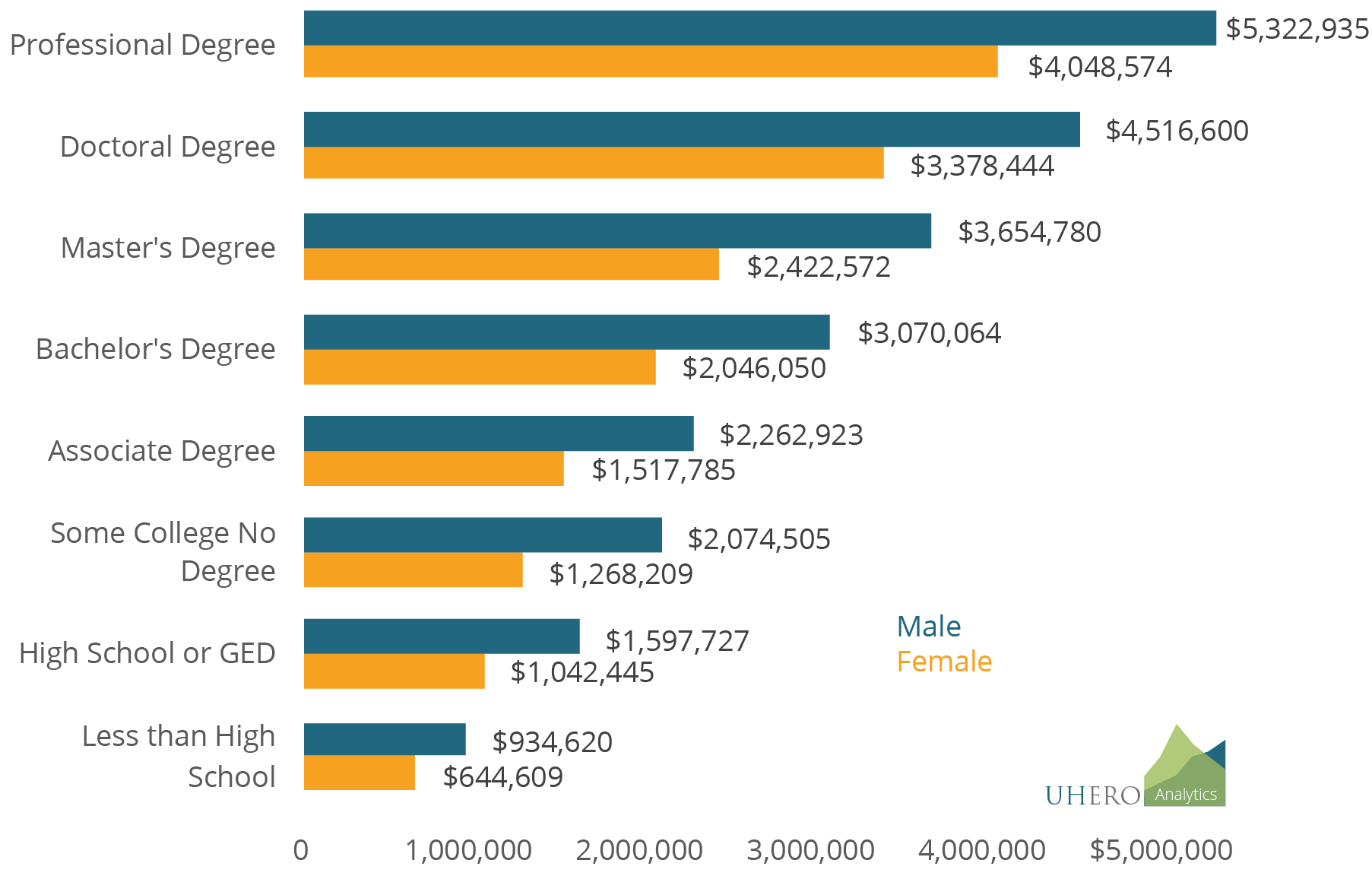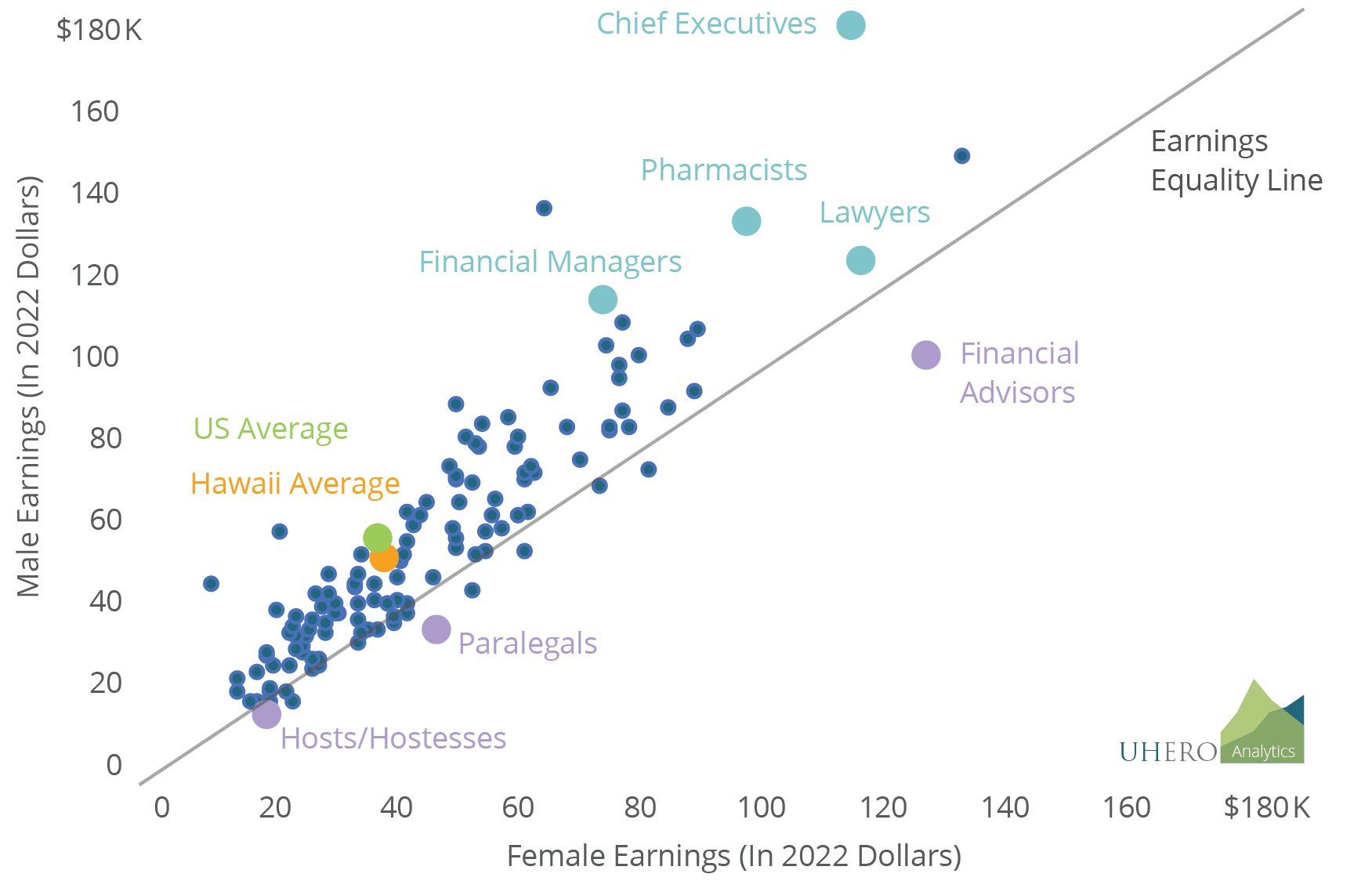BLOG POSTS ARE PRELIMINARY MATERIALS CIRCULATED TO STIMULATE DISCUSSION AND CRITICAL COMMENT. THE VIEWS EXPRESSED ARE THOSE OF THE INDIVIDUAL AUTHORS. WHILE BLOG POSTS BENEFIT FROM ACTIVE UHERO DISCUSSION, THEY HAVE NOT UNDERGONE FORMAL ACADEMIC PEER REVIEW.
By Rachel Inafuku
In recognition of International Women’s Day, which was recently celebrated on March 8, UHERO wishes to underscore the importance of women in the workforce by highlighting research on the gender pay gap in Hawaii that was presented in our latest forecast report. Please keep an eye out for forthcoming research that explores Hawaii’s gender pay gap in greater detail.
The gender pay gap has been a focal point in economics especially within the past year when Claudia Goldin won the Nobel Prize for uncovering key drivers of gender differences in the labor market. While female labor participation increased substantially over the past century, Goldin found that the earnings gap between men and women in the US hardly closed over a long period of time. According to data from the American Community Survey (ACS) spanning 2015 to 2022, the average male in Hawaii out-earned the average female by 50%, a smaller margin than the 69% gap observed nationally, but still very large.
These aggregate figures, however, overlook crucial factors such as educational attainment and occupation, which significantly impact earnings. For example, many jobs demanding higher skills and offering higher pay in Hawaii tend to have a greater proportion of men than women, thereby inflating overall average male earnings. An accurate measure of the gender pay gap needs to consider whether women with similar skill levels and educational backgrounds earn less than their male counterparts. This approach offers a more nuanced understanding of gender-based income disparities.
When examining earnings across education levels from 2015 to 2022, lifetime earnings are consistently higher for men than women, even within the same level of education. The smallest discrepancy is found among individuals with professional or doctoral degrees, where men earn 33 to 35% more than women holding the same degree. The most substantial gap surfaces among those who attended college but didn’t complete their degree: men in this group earn a staggering 63% more than their female counterparts. This disparity is glaring. For a woman to match the lifetime earnings of a man with some college experience but no degree, she would need to attain at least a master’s degree. Remarkably, at every educational tier, women in the subsequent degree bracket fail to surpass the earnings of men at the previous education level.
Lifetime earnings for men and women in Hawaii by education level (in 2022 dollars)

Looking within occupations, researchers can examine if there are systemic or direct discriminatory causes of the gender pay gap. Among the 130 occupations examined in our sample, men earned more than women in 82% of these careers, while only 18% of these professions saw women earning more than men. Occupations such as financial managers, chief executives, and pharmacists exhibit some of the lowest ratios of female to male earnings, indicating that women working these jobs earn much less than men. Conversely, roles like hosts/hostesses, bartenders, and paralegals show the highest ratios of female to male earnings, with women earning more than men on average in these occupations.
Male vs Female Earnings by Occupation


What drives Hawaii’s gender pay gap? Several national studies have found that women are more likely to prioritize home activities, often resulting in career sacrifices. For instance, it was found that women have a higher likelihood of reducing their work hours to care for their children compared with men. To this end, another study shows that while early career earnings between men and women are nearly identical, the arrival of a woman’s first child significantly impacts her income. Here in Hawaii, the data aligns with Goldin’s findings. Throughout their mid to late 20’s, men earn slightly more than women. After that, this pay differential widens as men’s wages grow at a much faster rate than women’s, and the gap continues over the course of a worker’s career. This coincides with the average age of first childbirth in Hawaii, which the New York Times reports as age 27.



